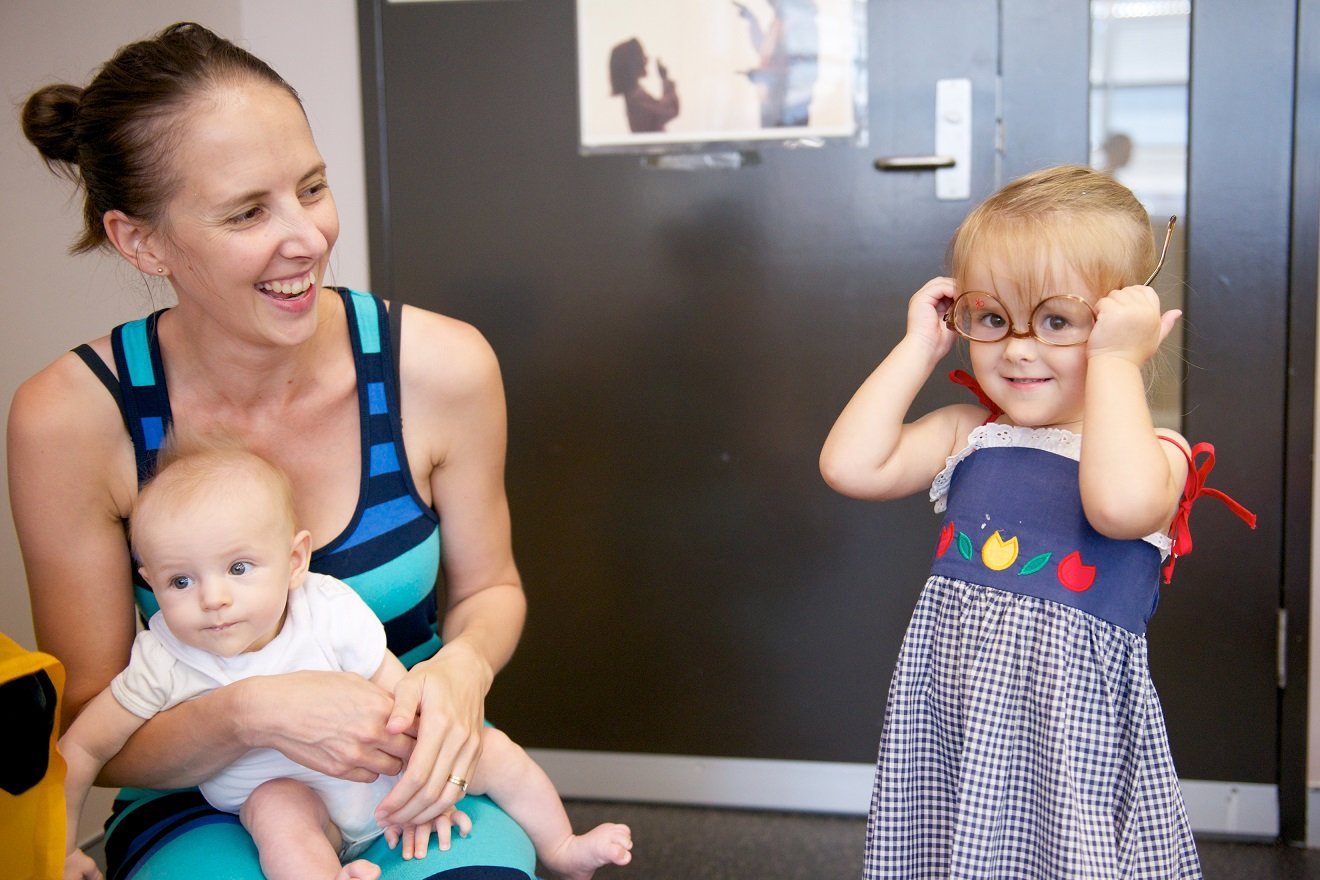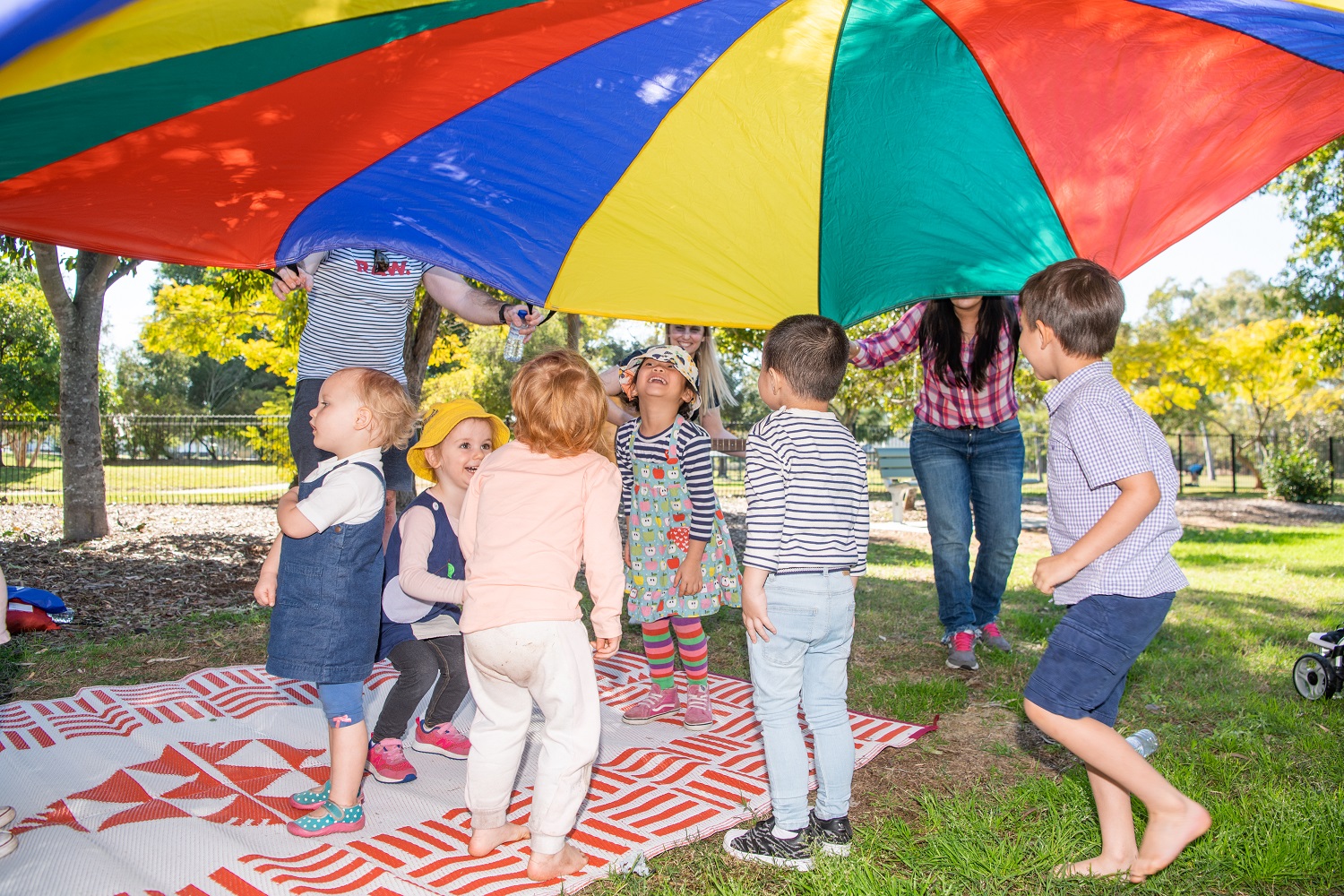Promoting independence with dressing skills builds your child’s self-esteem, confidence, and independence; playing dress-up is a great way to strengthen all of the skills required to dress and undress oneself!
Did you know that children begin to demonstrate dressing skills as early as one year old?
Below is the developmental dressing skills timeline. Depending on your child and their abilities, the timeline might be different for your child – and that’s okay. Keep in mind these are general guidelines only, use them to determine your child’s readiness for dressing independently.
| One-Year-Old |
- Holds arm or leg out to help with dressing
- Takes shoes and socks off
|
| Two-Year-Old |
- Helps you remove clothes
- Finds arm holes in a shirt
- Pulls pants up/down
- Unbuttons large buttons
|
| Three-Year-Old |
- Pulls zipper up and down after fastened
- Puts on shoes
- Puts on pull-over shirt
- Begins to button large buttons
|
| Four-Year-Old |
- Can pull up clothing, like pants
- Fastens smaller buttons
- Puts on socks
- Engages zipper
|
| Five-Year-Old |
- Can dress independently - sometimes putting clothes on backwards
|
| Six-Year-Old |
- Masters all clothing fasteners (hooks, buckles, zippers, buttons)
- Learns and masters shoe tying
|
Dressing can be a complex activity, as your child needs to be able to master a number of skills. These include:
- Gross motor skills: where your child needs to be able to move their limbs and body in a full range of movements, requiring muscle strength and flexibility at their joints.
- Balance: able to maintain their balance whilst changing posture/position – like putting pants on while standing, your child needs to be able to balance on one leg.
- Coordination: required to put their arms in shirt, coordinating both sides of the body to work together.
- Fine motor skills: reach, grasp, and release objects in order to complete tasks such as buttoning or holding items of clothing.
- Perception: understanding sizes and shapes of buttons, knowing size of neck versus arm holes.
- Senses: being able to feel their way without relying on sight, such as finding arm holes with a jumper over their head or fastening buttons behind their back.
- Body awareness: being able to tell right from left and the difference between arms and legs.

Playing dress-up can be used to develop independent dressing skills by allowing your child to develop and practice the above-mentioned skills. Your child can use dress-up costumes or have a fashion show, to turn dressing practice into playtime! In addition, playing dress-up encourages creativity, imagination, and fun.
Keep a box of dress-up clothes and encourage your child to put on and take off shirts, dresses, pants, capes, hats, scarves, shoes, costumes, and accessories. Bigger clothes are great for practicing the motions needed for dressing, without the resistance of elastic or tight-fitting items. Be sure to include items with different types of fasteners to add a challenge. Hanging a mirror at your child’s height can help them see what’s happening, help them track their own progress and allow them to marvel at their own creativity.
Being able to get dressed independently takes lots of practice, experience, and play to get there. Taking the time to play dress-up can help your child make the connections and motor-planning skills needed to succeed.


.jpg)

.jpg)
.jpg)

.jpg)